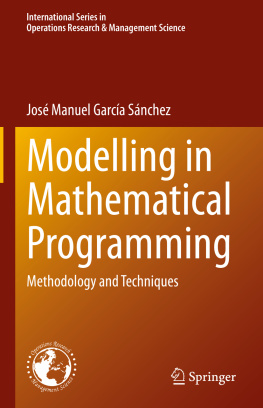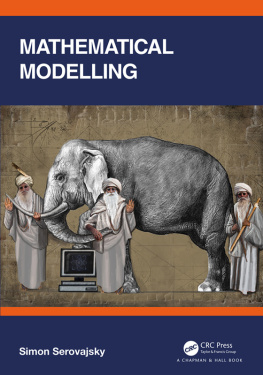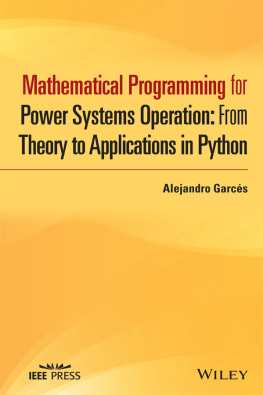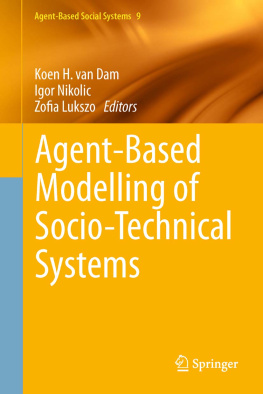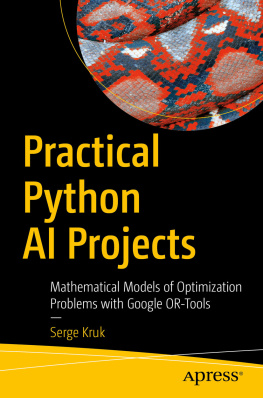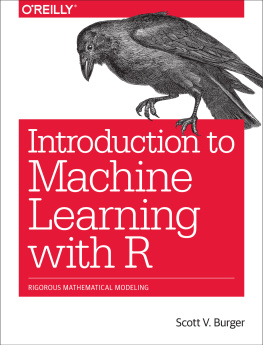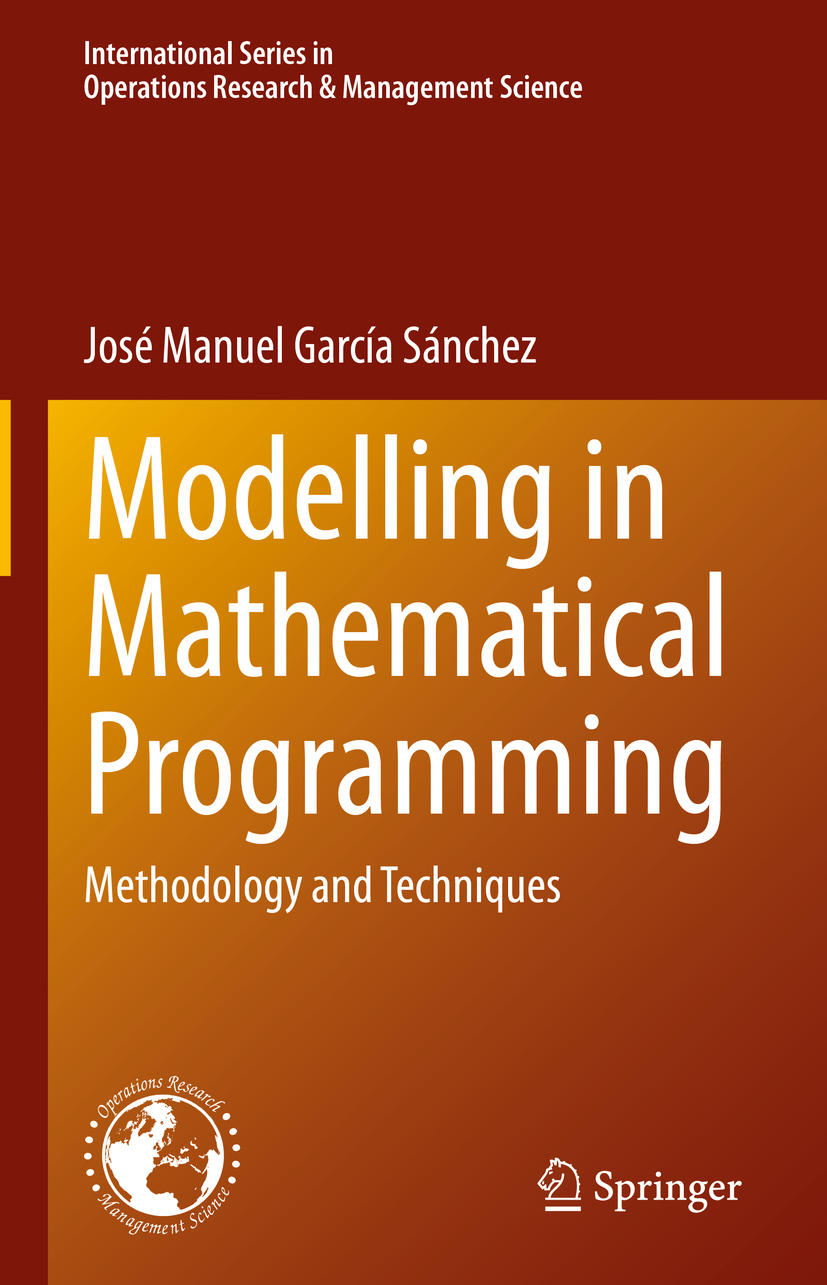Volume 298
International Series in Operations Research & Management Science
Series Editor
Camille C. Price
Department of Computer Science, Stephen F. Austin State University, Nacogdoches, TX, USA
Associate Editor
Joe Zhu
Foisie Business School, Worcester Polytechnic Institute, Worcester, MA, USA
Founding Editor
Frederick S. Hillier
Stanford University, Stanford, CA, USA
More information about this series at International Series in Operations Research and http://www.springer.com/series/6161 The book series
Management Science encompasses the various areas of operations research and management science. Both theoretical and applied books are included. It describes current advances anywhere in the world that are at the cutting edge of the field. The series is aimed especially at researchers, doctoral students, and sophisticated practitioners. The series features three types of books:
Advanced expository booksthat extend and unify our understanding of particular areas.
Research monographsthat make substantial contributions to knowledge.
Handbooksthat define the new state of the art in particular areas. They will be entitled
Recent Advances
in (name of the area). Each handbook will be edited by a leading authority in the area who will organize a team of experts on various aspects of the topic to write individual chapters. A handbook may emphasize expository surveys or completely new advances (either research or applications) or a combination of both.
The series emphasizes the following four areas:Mathematical Programming: Including linear programming, integer programming, nonlinear programming, interior point methods, game theory, network optimization models, combinatorics, equilibrium programming, complementarity theory, multiobjective optimization, dynamic programming, stochastic programming, complexity theory, etc.Applied Probability: Including queuing theory, simulation, renewal theory, Brownian motion and diffusion processes, decision analysis, Markov decision processes, reliability theory, forecasting, other stochastic processes motivated by applications, etc.Production and Operations Management: Including inventory theory, production scheduling, capacity planning, facility location, supply chain management, distribution systems, materials requirements planning, just-in-time systems, flexible manufacturing systems, design of production lines, logistical planning, strategic issues, etc.Applications of Operations Research and Management Science: Including telecommunications, health care, capital budgeting and finance, marketing, public policy, military operations research, service operations, transportation systems, etc.
Jos Manuel Garca Snchez
Modelling in Mathematical Programming
Methodology and Techniques
1st ed. 2021
Jos Manuel Garca Snchez
IO and Business Management, University of Seville, Sevilla, Sevilla, Spain
ISSN 0884-8289 e-ISSN 2214-7934
International Series in Operations Research & Management Science
ISBN 978-3-030-57249-5 e-ISBN 978-3-030-57250-1
https://doi.org/10.1007/978-3-030-57250-1
The Editor(s) (if applicable) and The Author(s), under exclusive license to Springer Nature Switzerland AG 2021
This work is subject to copyright. All rights are solely and exclusively licensed by the Publisher, whether the whole or part of the material is concerned, specifically the rights of translation, reprinting, reuse of illustrations, recitation, broadcasting, reproduction on microfilms or in any other physical way, and transmission or information storage and retrieval, electronic adaptation, computer software, or by similar or dissimilar methodology now known or hereafter developed.
The use of general descriptive names, registered names, trademarks, service marks, etc. in this publication does not imply, even in the absence of a specific statement, that such names are exempt from the relevant protective laws and regulations and therefore free for general use.
The publisher, the authors and the editors are safe to assume that the advice and information in this book are believed to be true and accurate at the date of publication. Neither the publisher nor the authors or the editors give a warranty, expressed or implied, with respect to the material contained herein or for any errors or omissions that may have been made. The publisher remains neutral with regard to jurisdictional claims in published maps and institutional affiliations.
This Springer imprint is published by the registered company Springer Nature Switzerland AG
The registered company address is: Gewerbestrasse 11, 6330 Cham, Switzerland
To Carmen, for her unconditional support.
To Laura and Sara.
To my family.
Preface
Generally, modelling has been considered a little regulated technique, based on knowledge of the types of optimization problems and the experience of the modeler. This book presents the first methodology for the building of a mathematical model in an integral way, as well as new techniques that help us if we want to follow our own building criteria. The objective is to provide a simple work dynamic that facilitates the modelling process.
The book is a basic tool for learning to model in mathematical programming, from models without much complexity to complex system models. The book presents a structure the models, and complex constraints models more easily. It is a basic modelling guide for any system, and explains models already existing in the literature.
The book presents a structure that guides the orderly learning of the components that the methodology establishes in an optimization problem, within a system:
The elements: all the actors that participate in the system. They are diverse in nature, from people, tools, places, time, etc. They usually have associated information that we will call data, and that must be numerical information or to be defined numerically.
The elements participate in the actions that occur in the system and support its specifications. They are closely related to the activities that occur in the system, and the joint identification of both components is sometimes effective.
The elements are configured taking into account their quantitative nature, their associated data and their reference in the specifications. The quantitative nature of the elements will be used as a tool to help define decision activities. It is probably an unnecessary tool for an experienced modeler, but it may be useful for people who start modelling in mathematical programming.
Decision activities: direct actions that occur in the system for which it is necessary to decide their value, which is not determined. They are associated with the elements. The decision activities are simple actions. They cannot be the result of a logical calculation, simple function or combination of other decision activities. Decision activities define the main variables of a model.
Calculations: based on the decision activities, a system may need additional information that is obtained from these decisions through a calculation process. Calculations can be generated from other calculations, not only from the base decisions of the system. The calculations are also represented as variables.

